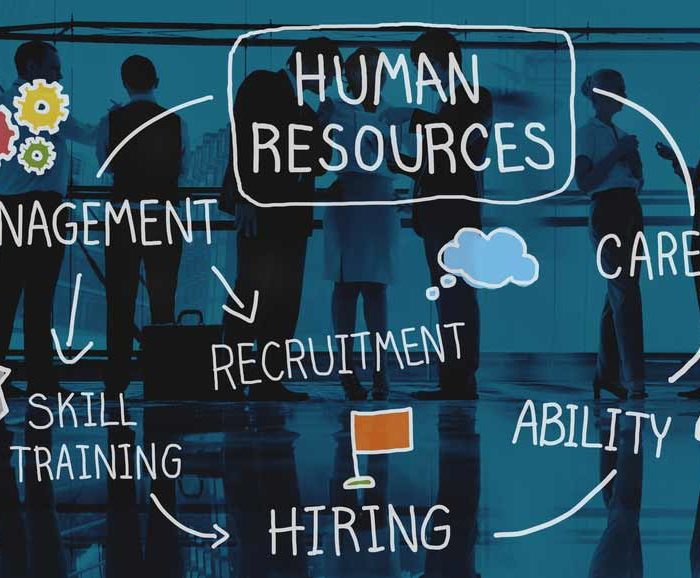
what is human resource management
what is human resource management (HRM) is an integral element of business operations and success, responsible for improving effectiveness by effectively overseeing human capital. We will cover in this 2000 word article some aspects of HRM as it has developed over time as well as its relevance in contemporary organizations - this topic could even impact how work will evolve into the near future!
1. Evolution of HRM
Human Resource Management has an expansive and long history, which has undergone major evolution throughout its development. Over time it has transitioned away from being solely concerned with personnel issues to becoming increasingly strategic and person-centric – this history marks this shift with several significant landmarks illustrating this transformation:
Personnel Management Era: At the turn of the 20th century, personnel management emerged to perform administrative duties like hiring/firing decisions, payroll administration and compliance auditing.
Personnel managers traditionally were employed for administrative duties and served as intermediaries between managers and employees.
Human Relations Era By the 20th century, however, attention had turned to employee satisfaction and their motivation as the focus.
Also Read: WHAT IS PROCESS?
Researchers like Elton Mayo conducted studies at Hawthorne Works which provided researchers a greater appreciation of employee morale, work culture and other key social elements at work. Human Resource Management Era:
In the 20th Century, Human Resource Management (HRM), or Human Capital Management as it became commonly known, emerged as an increasingly proactive and strategic method of working. HRM encompassed recruitment as well as retention, development and acquisition and aligning HR processes with business goals and aligning all HR functions accordingly. II. Essential Functions of HRM
Modern HRM is an increasingly multi-dimensional discipline within an organization, serving multiple important tasks within it to attract, train and retain qualified workers. Some key functions may include:
Recruitment of Talent
Recruitment involves finding, selecting and hiring those best-suited to job responsibilities. To do so effectively requires creating job descriptions, interviewing candidates, conducting an onboarding procedure and overseeing an onboarding procedure. Incorporation: Employee Development.
Training and Development programs to help employees enhance their abilities are provided for. Performance appraisal systems as well as plans to support career growth should also be integrated. Compensation & Benefits
Comprehensive compensation plans must also be planned, administered, managed and reviewed on an ongoing basis in order to remain competitive and ensure employee well-being.
Also Read: what-is-quality-assurance-definition-and-overview
Administration of employee benefits such as health and retirement plans for its staff; Employee Relations: Promoting an enjoyable work culture. Resolution of conflicts, grievances from employees and disciplinary measures when necessary.
Assume Legal and Compliance Responsibilities Now
Assuring compliance with labor laws and rules as well as handling legal issues related to disputes or employment contracts. Performance Management: Establish goals for performance expectations.
Evaluation and monitoring employee performance by giving feedback and creating plans for improvement are among the core tenets of HRM.
III. Human Capital Management as a Strategic Initiative
Over time, Human Resource Management (HRM) has transformed from an administrative task into a critical component of organizations. Professional HR specialists play a significant role in aligning HR strategies with goals of the business – here’s how it can contribute strategically:
Strategic Workforce Plans: HR professionals assess future requirements of their organization and devise plans to attract, develop and retain talent that meets them. In doing this they identify skills gaps as well as potential strategies to bridge them. Talent Management Strategies: Lastly talent management services may assist HR with staff retention by effectively monitoring talent for them as needed.
HRM involves the identification and development of high-potential employees within your company. Succession planning helps provide you with a pool of potential leaders while Change Management plays a pivotal role.
HR professionals provide support in managing organizational changes through communications, employee training and transition planning services. Their goal is to make sure employees can adapt well to change. Their efforts also enhance diversity and inclusion throughout an organization.
HRM promotes diversity and inclusion to foster an innovative, culturally vibrant workplace environment. Diverse teams represent more of the customer base while offering fresh perspectives to clients and enhance employee engagement.
Employee engagement increases energy and dedication for employers. HRM strategies like employee recognition programs and feedback mechanisms can increase this engagement. But in today’s digitalized workplace environment HRM cannot remain at bay, because employee engagement must continue. IV. Human Resource Management in a Digital Era
Technology has greatly transformed HRM procedures. Human Resource Information Systems (HRISs), along with various software solutions have simplified HR processes and data management significantly, thus positively impacting HR practices and management in several ways:
Automatization and Efficiency.
HRIS technology automates administrative tasks such as payroll processing and benefit administration to reduce mistakes while saving both time and resources. Chatbots and AI-powered tools assist employees by answering queries as well as scheduling interviews quickly. Ultimately, data analytics:
HR professionals rely on information analytics in order to make educated decisions regarding talent management. Predictive analytics can assist HR personnel by helping identify patterns in employee turnover rates and devising proactive retention strategies for retained workers. Work from Home or Remote Location:
Technology allows remote working and flexible scheduling arrangements; both have become essential elements in today’s workplace environment. HRM plays an essential role in developing policies and procedures which support hybrid and remote working models; HR also plays an essential part in supporting learning development processes within workplace environments.
E-learning modules play an invaluable role in employee training and further development. HRM utilizes technology to deliver flexible yet tailored learning experiences to employees. See V. Human Resource Management Challenges & Solutions for further insight.
HRM remains an indispensable aspect of modern organizations, yet HR professionals face numerous obstacles today that hamper its effectiveness as a key contributor. Addressing such obstacles will ensure HR remains integral to organizational success; some major problems and solutions include:
Talent Scarcities:
HRM can address talent shortages through partnerships with education institutions, referral programs and competitive compensation in order to attract and retain top talent.
Employee Burnout: (Try NOT to panic).
Problem: Confusion between personal and professional lives may result in burnout.
Solutions: HRM can promote work-life equilibrium by encouraging regular breaks and offering mental health support services as part of its commitment to Diversity and inclusion initiatives.
Problem: Promoting inclusive workplace requires constant efforts and devotion from HRM, but solutions exist: training programs, mentorship initiatives and recruitment initiatives can all play a part. Technological Innovations:
Staying abreast of ever-evolving HR technology can be difficult. HR specialists should invest in ongoing education while working closely with IT departments in selecting and implementing suitable technology solutions for HR services. All employees have rights regarding data privacy and security that they need to consider before using HR solutions.
Human Resources Professionals have the responsibility of safeguarding employee data against data protection regulations and can enact appropriate privacy policies, inform employees about data security risks and implement protected HRIS platforms as solutions. VI. What Is The Future Of HRM
As organizations evolve and HRM adapts accordingly, its future may also change significantly due to various major developments:
Remote and hybrid work models: As the pandemic spread, remote working has become more widespread; HRM will promote and adapt models to suit employee preferences.
Artificial Intelligence (AI) and Automation: Artificial intelligence will become an increasingly significant player in recruiting talent as well as employee engagement efforts, data analysis and HR operations being more productive overall.
HRM will prioritize employee wellness through services for mental health as well as flexible work arrangements and wellness programmes.
Continuous Learning and Skill Development: HRM will promote lifelong learning by giving employees opportunities to learn new skills that allow them to adjust to changing demands of their jobs more easily.
HRM plays an essential part in supporting sustainability initiatives as well as moral and ethical business methods.
Conclusion
Human Resource Management is at the core of every company and organization, responsible for overseeing what may be its greatest resource: employees. Over time, HRM has evolved into an integral component in shaping organizational success – moving beyond being just transactional services into becoming integral partners who help determine success through data and technology-aided decision-making while meeting diversity, talent management, and technology challenges head-on. With companies continuing to expand and HRM becoming ever more critical as part of shaping the workplace environments of tomorrow - its significance increases accordingly.













